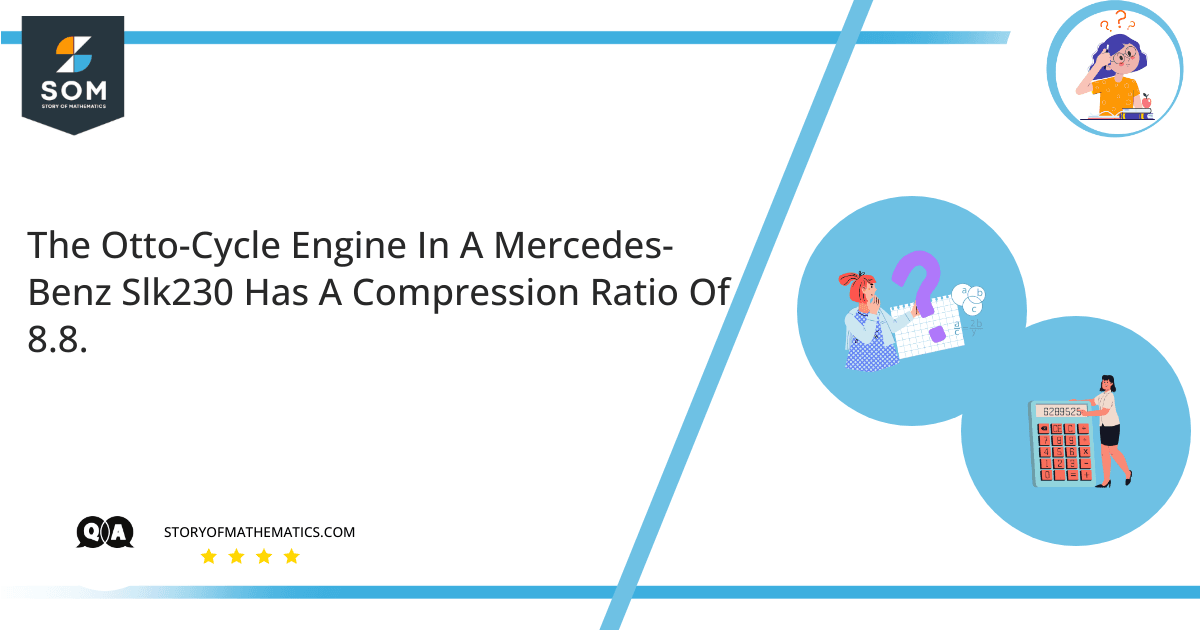
- Find the ideal efficiency of the heat engine. Utilize $\gamma = 1.40$.
- The Dodge Viper GT2 engine has a compression ratio of $9.6$. With this increase in the compression ratio, how much does the ideal efficiency increase?
This problem aims to familiarize us with ratios and efficiency. The concept required to solve this problem is related to the ratio, proportion, and efficiency of an otto cycle. The otto Cycle defines how heat engines shift fuel into motion.
A standard fuel engine has an operational thermal efficiency of around $25\%$ to $30\%$. The rest of $70-75\%$ is abandoned as scrap heat which means it is not used in deriving the wheels.
Similar to other thermodynamic cycles, this cycle transforms chemical energy into thermal heat and consequently into motion. As an outcome of this information, we can specify the thermal efficiency, $\eta_{th}$, as the ratio of the work being done by the heat engine $W$, to the heat infusion at the increased temperature, $Q_H$. The formula for thermal efficiency helps in deriving the formula for efficiency of the otto cycle,
\[\eta_{th} = \dfrac{W}{Q_H}\]
The standard Otto cycle efficiency is just a function of the compression ratio given as:
\[\eta_{th} = 1- \dfrac{1}{r^{\gamma – 1}}\]
Where $r$ is the compression ratio and,
$\gamma$ is the thermodynamic compression equal to $\dfrac{Const_{pressure}}{Const_{volume}}$.
Expert Answer
Part a:
In this part, we are required to calculate the ideal efficiency of the heat engine when the ratio of thermodynamics compression is $\gamma = 1.40$. Then the ideal efficiency $(e)$ of the otto cycle can be expressed as:
\[\eta_{th}=1- \dfrac{1}{r^{\gamma – 1}}\]
Now substituting the values of $r$ and $\gamma$ into the above equation gives us:
\[\eta_{th}=1- \dfrac{1}{8.8^{1.40 – 1}}\]
\[\eta_{th}=1- \dfrac{1}{8.8^{0.40}}\]
\[\eta_{th}=1- \dfrac{1}{2.38}\]
\[\eta_{th}=\dfrac{2.38 – 1}{2.38}\]
\[\eta_{th}=0.578\]
OR,
\[\eta_{th} = 58\%\]
So the ideal efficiency of Mercedes-Benz SLK230 comes out to be $\eta_{th} = 58\%$.
Part b:
The Dodge Viper GT2 engine has a negligibly higher compression ratio of $r = 9.6$. We are required to calculate the increase in ideal efficiency after this increase in the compression ratio. So using the equation of thermal efficiency for the otto cycle with $r = 9.6$ gives us:
\[\eta_{th}=1- \dfrac{1}{9.6^{1.40 – 1}}\]
\[=1- \dfrac{1}{9.6^{0.40}} \]
\[=1- \dfrac{1}{2.47} \]
\[=\dfrac{2.47 – 1}{2.47} \]
\[\eta_{th}=0.594 \]
OR,
\[\eta_{th} = 59.4\%\]
So the increase in the ideal efficiency is $\eta_{th} = 59.4\% – 58\% = 1.4\%$.
The ideal efficiency gets increased as the compression ratio increases.
Numerical Result
Part a: The ideal efficiency of Mercedes-Benz $SLK230$ is $\eta_{th} = 58\%$.
Part b: The increase in the ideal efficiency is $1.4\%$.
Example
Suppose an Otto cycle has $r = 9 : 1$. The pressure of the air is $100 kPa = 1 bar$, and at $20^{\circ}$ C and $\gamma = 1.4$. Calculate the thermal efficiency of this cycle.
We are required to calculate the thermal efficiency with the compression ratio $\gamma=1.4$. So using the equation of thermal efficiency for the otto cycle gives us:
\[\eta_{th} = 1- \dfrac{1}{9^{1.40 – 1}} \]
\[= 1- \dfrac{1}{9^{0.40}} \]
\[= 0.5847 \]
OR
\[\eta_{th} = 58\%\]
